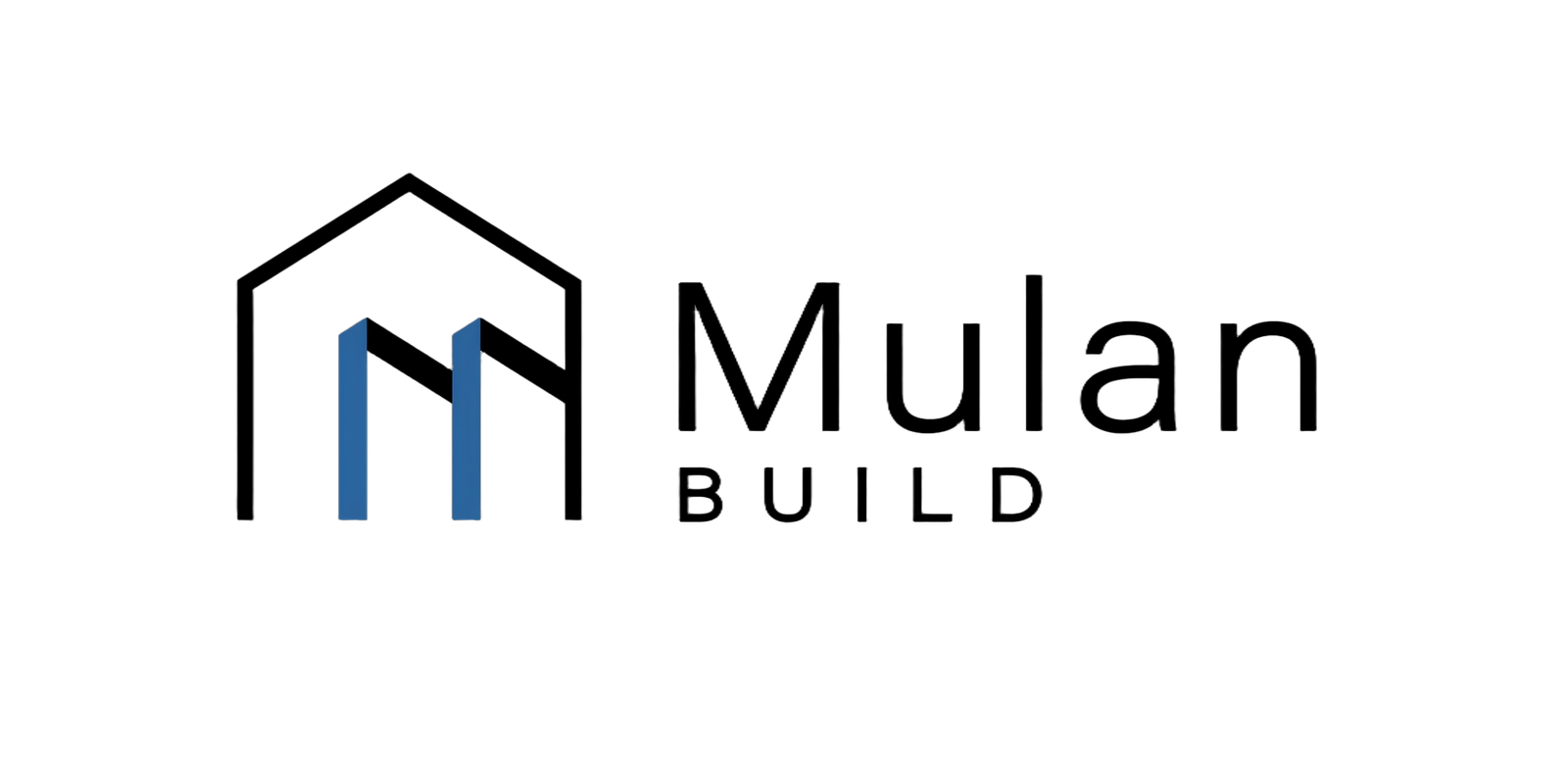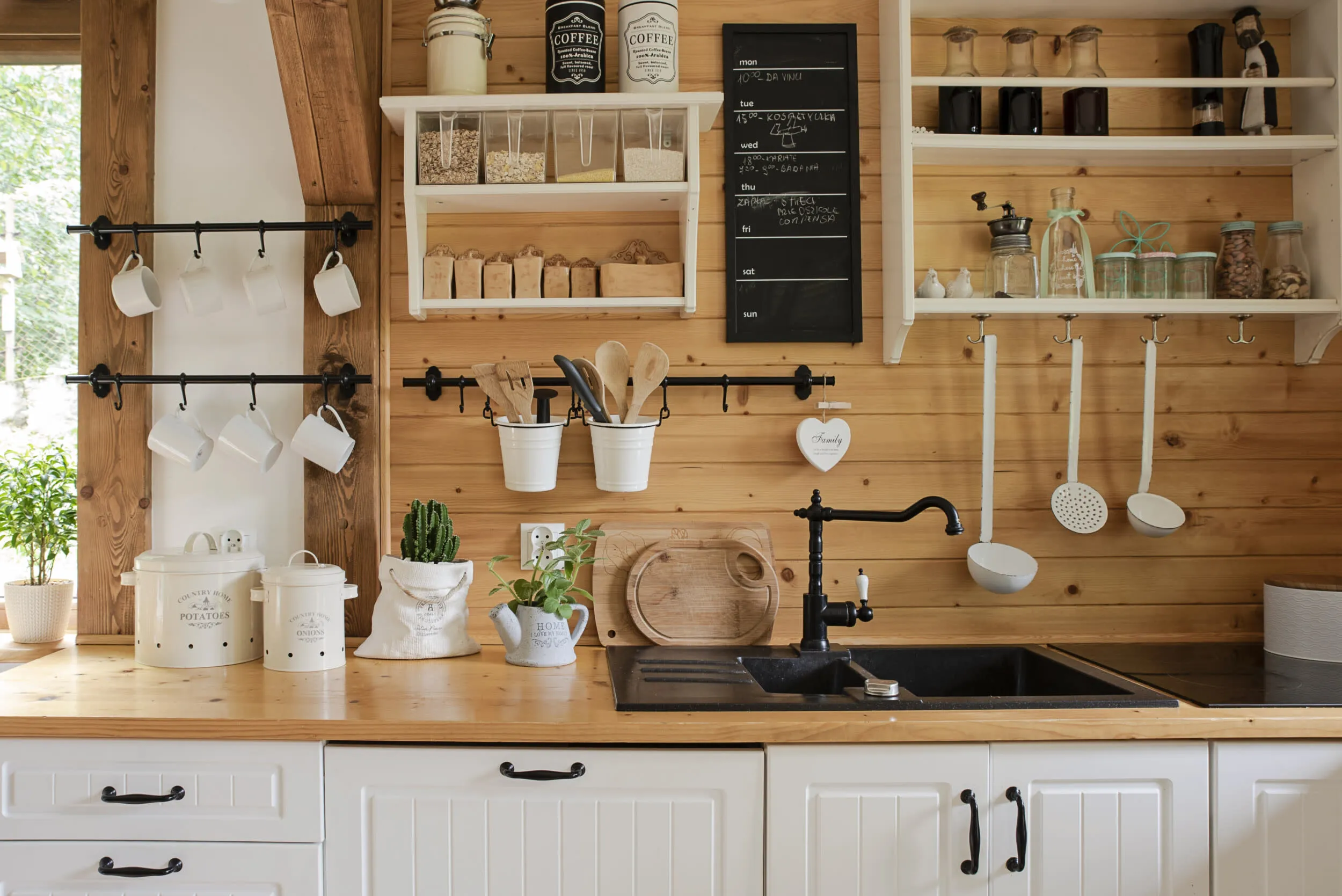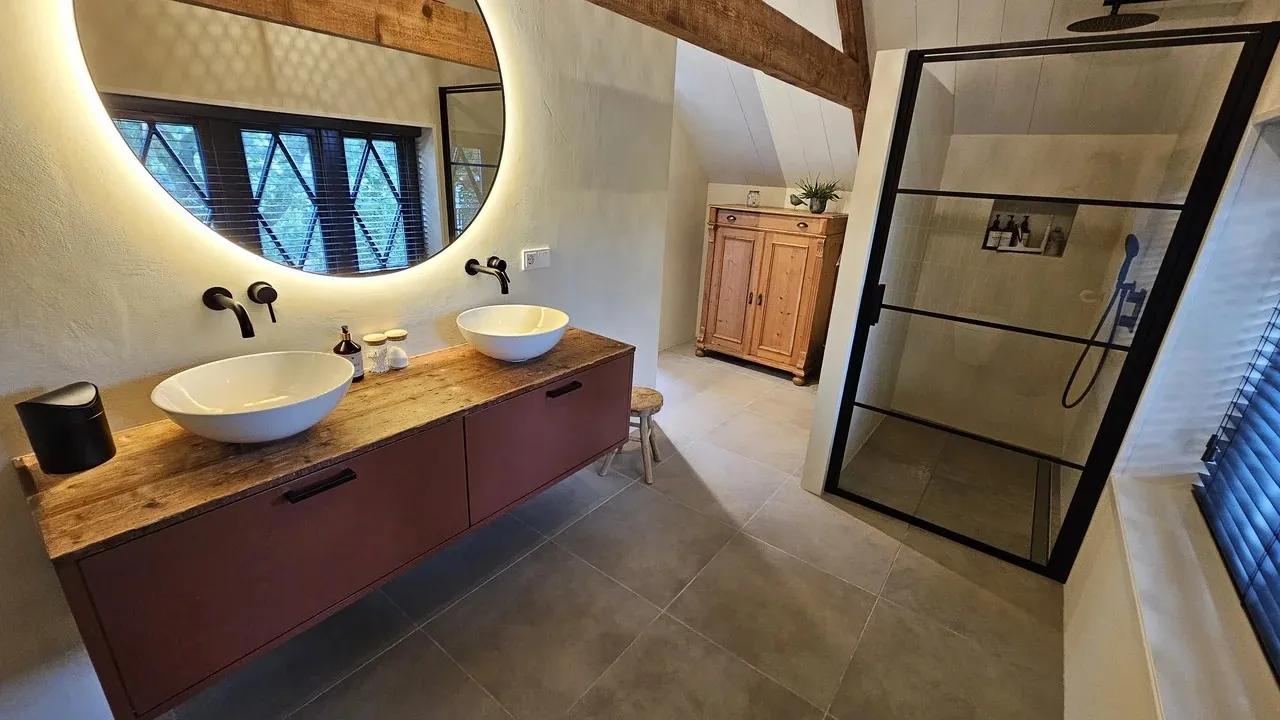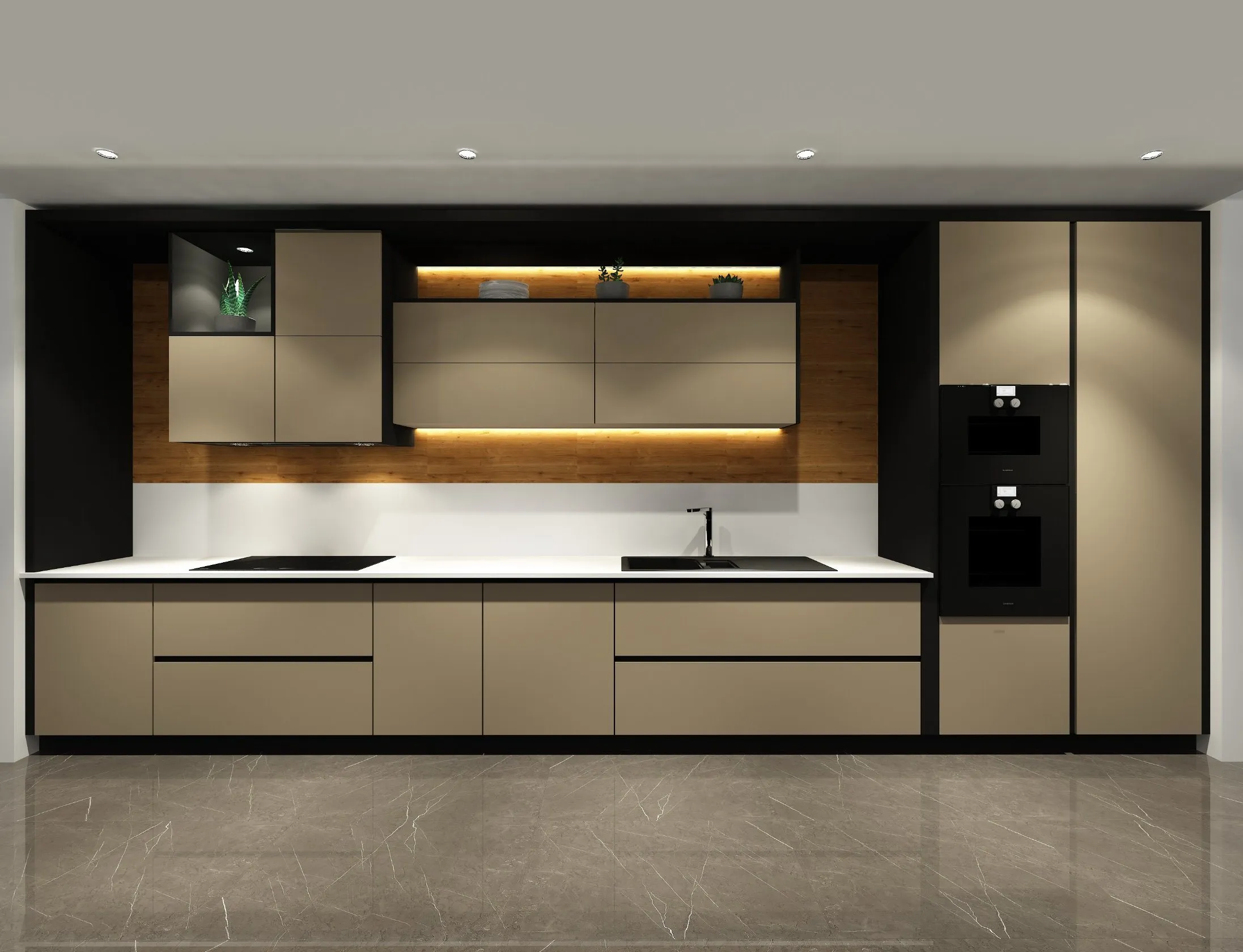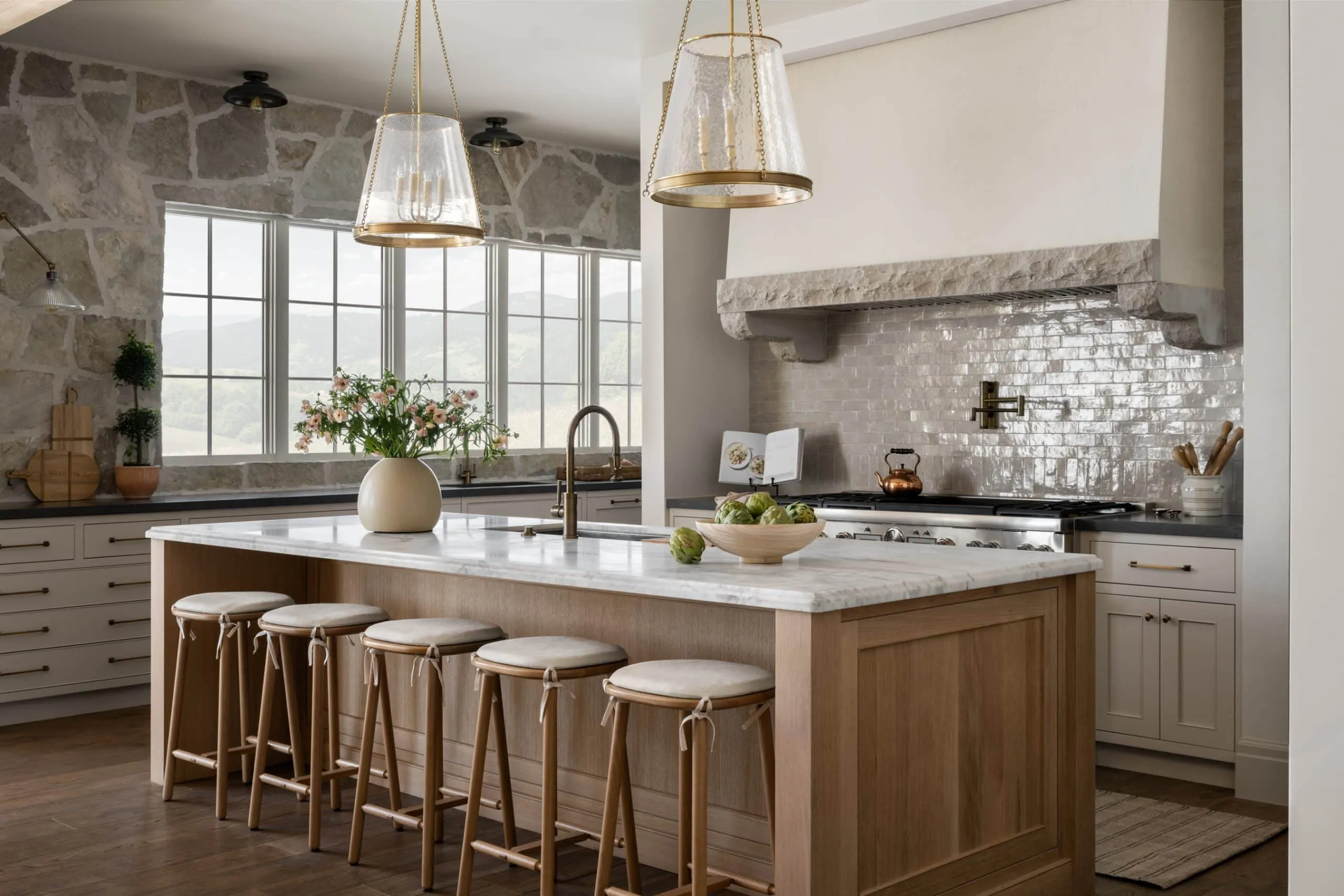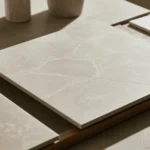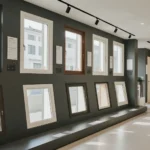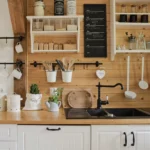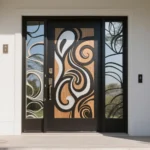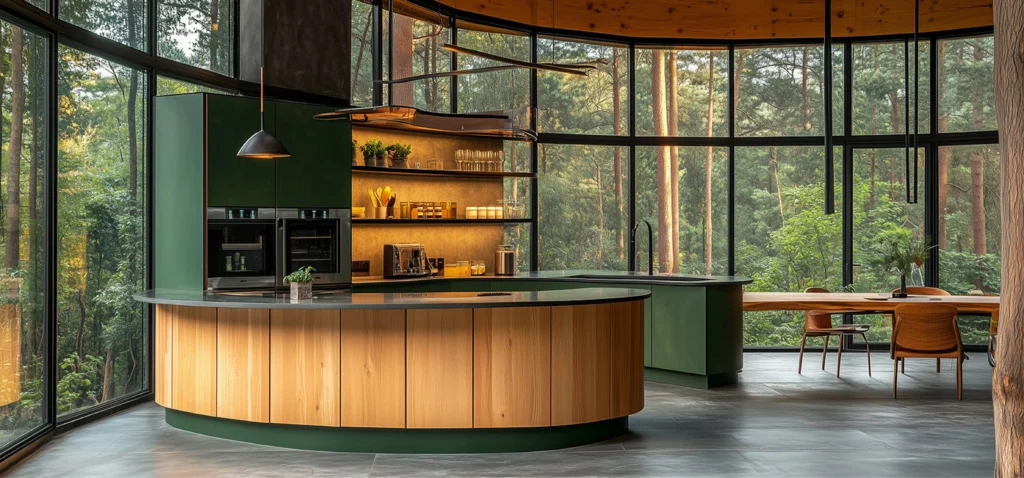
When you choose the wrong cabinet material, the finish may look great at first but can fail within years. This means wasted money, stress, and another renovation sooner than planned.
Our one-stop building material service is based in Foshan, supporting overseas projects. We supply kitchens, wardrobes, baths, doors, windows, tiles, lights, flooring, and wall panels. Clients include homeowners, contractors, designers, developers, and builders. We also provide 3D design for interiors and façades, full-house matching solutions, export logistics, and after-sales support.
Designers in 2025 recommend plywood, MDF, or particle board depending on your project needs. Plywood offers strength, MDF provides smooth finishes, and particle board delivers budget savings. The right choice depends on durability, style, and cost.
Cabinet materials are not just about looks. They shape how your kitchen performs every day. You can browse our cabinets page to see a variety of materials.
What are the most durable cabinet materials in 2025?
Plywood is the most durable material for cabinets in 2025. It resists bending and warping, holds screws securely, and lasts for decades with proper care. Designers prefer it for structural parts.
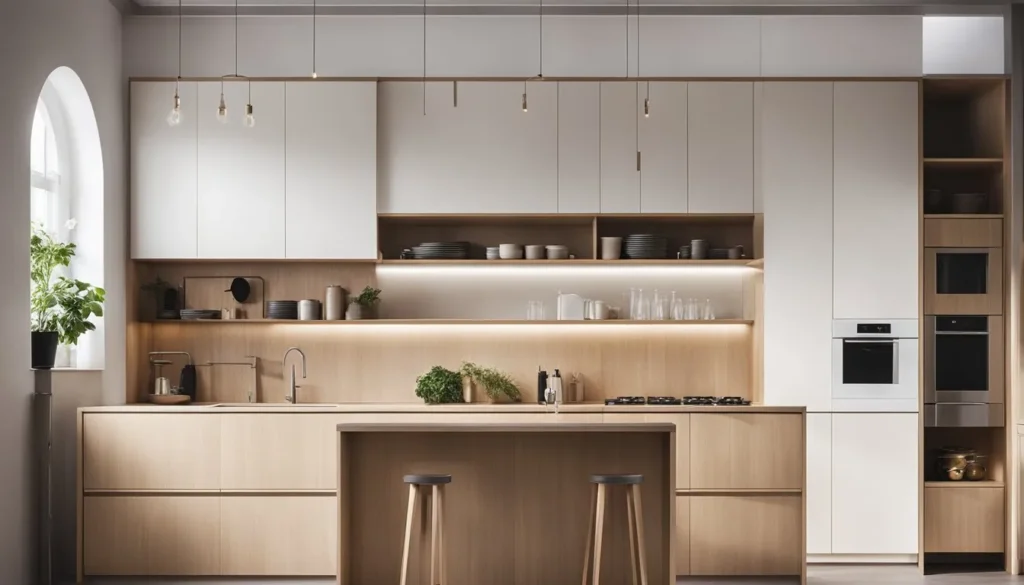
Why plywood is durable
Plywood is built by stacking thin wood layers with grains crossing at right angles. This cross-grain structure adds strength and stops cracks from spreading. It also makes plywood resistant to bending. Many designers still call plywood “solid wood” because of its structural quality.
Comparing plywood, MDF, and particle board durability
| Material | Durability level | Lifespan estimate | Screw holding | Moisture resistance |
| Plywood | High | 30–50 years | Excellent | Good |
| MDF | Medium | 10–15 years | Strong | Moderate |
| Particle board | Low | 3–10 years | Weak | Poor |
Everyday use and maintenance
Durability is not just about material science. It also depends on your kitchen’s daily load. Heavy pans and countertops demand plywood. MDF works fine for painted doors. Particle board fits only low-traffic kitchens. By matching material to use, you avoid early damage and costly repairs.
Is MDF or particle board better for kitchen cabinets?
MDF is usually better than particle board for kitchen cabinets. It is denser, holds screws more securely, and offers a smooth surface for painting or veneering.
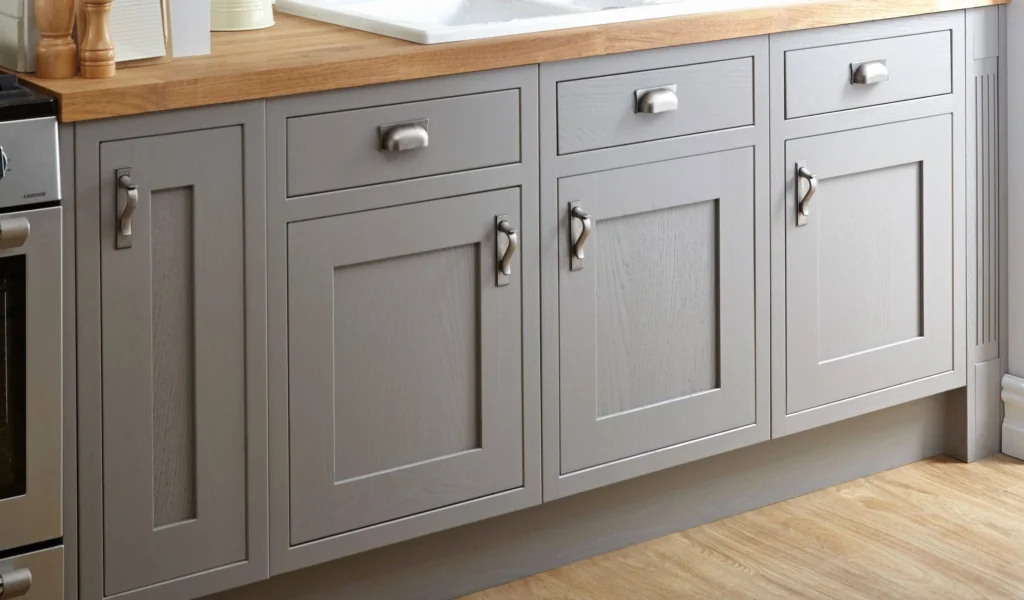
Understanding MDF and particle board
MDF is made of fine wood fibers mixed with resin, pressed under heat. Particle board is made from larger chips, sawdust, and resin, which makes it lighter but weaker. MDF is heavier but resists warping better.
Best uses
- MDF: doors, drawer fronts, and decorative panels where a flawless finish matters.
- Particle board: cabinet boxes in budget kitchens, shelves in rental units.
Cost and value
MDF costs more than particle board but lasts longer. Particle board saves money at first but often needs replacing sooner. If your kitchen is a long-term investment, MDF is the smarter choice.
Why do designers still recommend plywood for cabinets?
Designers recommend plywood because it balances cost, strength, and longevity. It is ideal for structural cabinet parts, especially where heavy loads and high moisture are common.
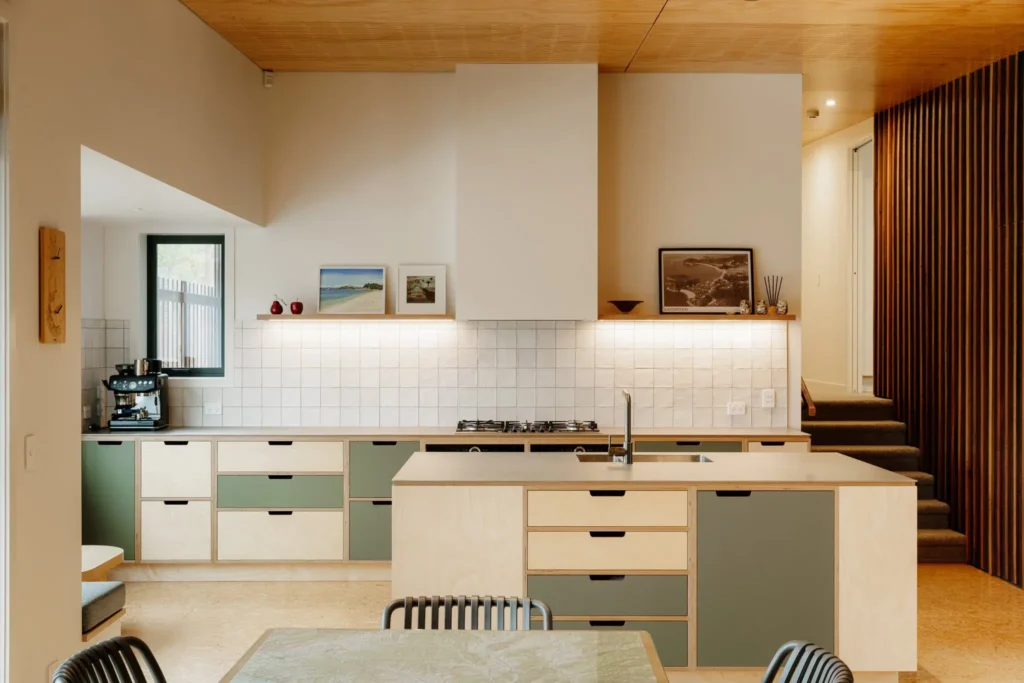
Strength in structure
Cabinet boxes made from plywood are less likely to sag under heavy countertops. Shelves hold weight better and resist swelling in humid kitchens. For areas like sink bases, plywood is often the only safe choice.
Natural and sustainable appeal
Plywood uses real wood veneers and has fewer voids than cheaper boards. Many builders consider it a greener choice than particle board because it emits fewer VOCs. You can also find marine-grade plywood that resists water damage even in coastal regions.
Investment view
While more expensive, plywood saves money over time. Cabinets built with plywood often outlast MDF and particle board, reducing replacement costs. For designers, this makes it the “no regrets” material.
Which cabinet material resists moisture the best?
Plywood resists moisture better than MDF and particle board. MDF can swell if not sealed, and particle board deteriorates quickly in damp areas.
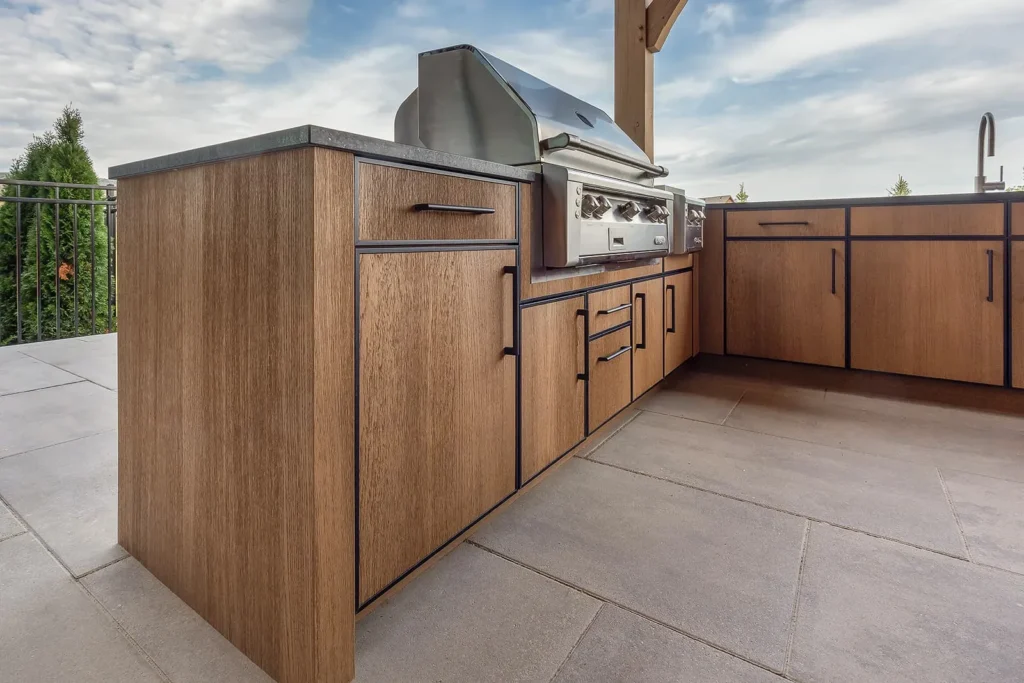
Moisture behavior explained
When exposed to water, particle board absorbs moisture fast, leading to swelling and crumbling. MDF holds up slightly better but still needs edge banding. Plywood, with its cross-layers, resists moisture better, especially when sealed.
Where moisture matters most
- Kitchens with sinks, dishwashers, or steam ovens
- Bathrooms with constant humidity
- Laundry rooms exposed to water
Table: Moisture performance
| Material | Water resistance | Best practice use |
| Plywood | High | Sink bases, bathrooms, humid kitchens |
| MDF | Medium | Painted doors, needs sealing |
| Particle board | Low | Avoid in wet zones, only for dry interiors |
Are solid wood cabinets worth the extra cost?
Solid wood cabinets are worth the cost if you want durability and a natural look. They last decades, can be refinished, and add resale value to homes.
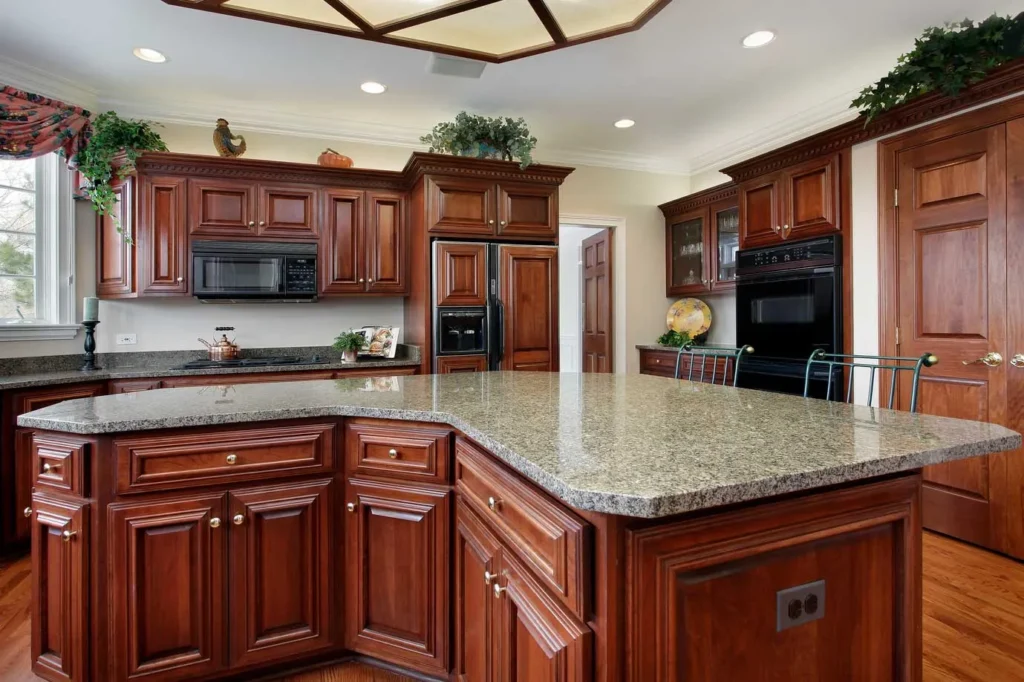
Advantages of solid wood
Solid wood has natural grain and beauty that engineered boards cannot fully mimic. Unlike MDF or particle board, solid wood can be sanded and refinished many times. This extends its lifespan far beyond other materials.
When solid wood makes sense
- High-end kitchen projects
- Homes where resale value matters
- Spaces where longevity is more important than upfront cost
Downsides
Solid wood is the most expensive choice. It can warp in humidity if not properly finished. For budget-conscious homeowners, plywood and MDF provide better balance.
How long can MDF cabinets last with daily use?
MDF cabinets can last 10–15 years with proper care. Lifespan depends on sealing, installation quality, and protection from moisture.
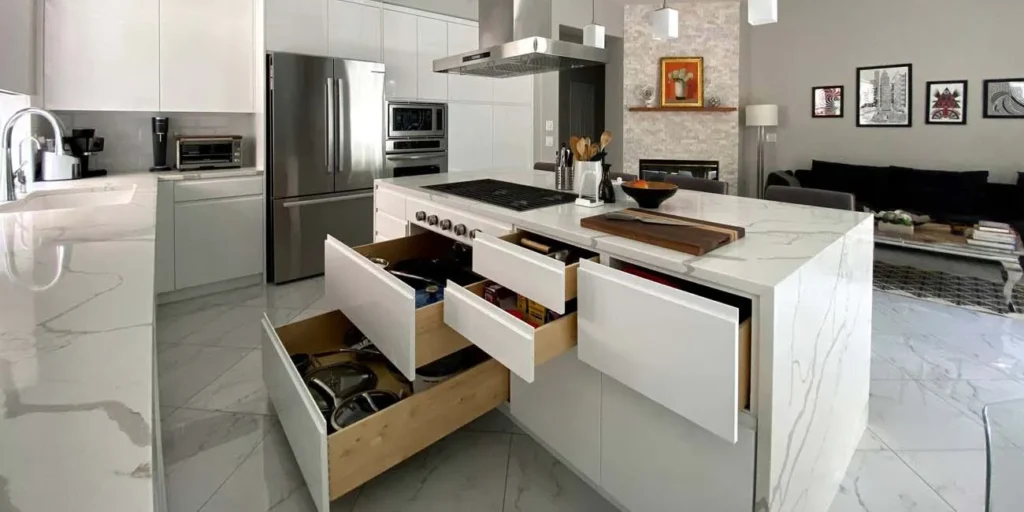
What affects lifespan
- Moisture: unsealed edges swell with water.
- Weight: overloaded shelves sag faster.
- Heat: cabinets near ovens may warp.
Care tips
- Seal edges with banding or paint.
- Keep moisture away by maintaining ventilation.
- Avoid overloading shelves with heavy cookware.
Compared to particle board, MDF lasts longer. Compared to plywood, it lasts less. The choice depends on how long you plan to use the kitchen before the next remodel.
Conclusion
The right cabinet material depends on your priorities: plywood for strength, MDF for design, and particle board for cost savings.
Final CTA
If you are planning a project, send us your floor plan. We will create a quick proposal with cabinet choices matched to your design style and budget. Want to start? Just send us the plan.
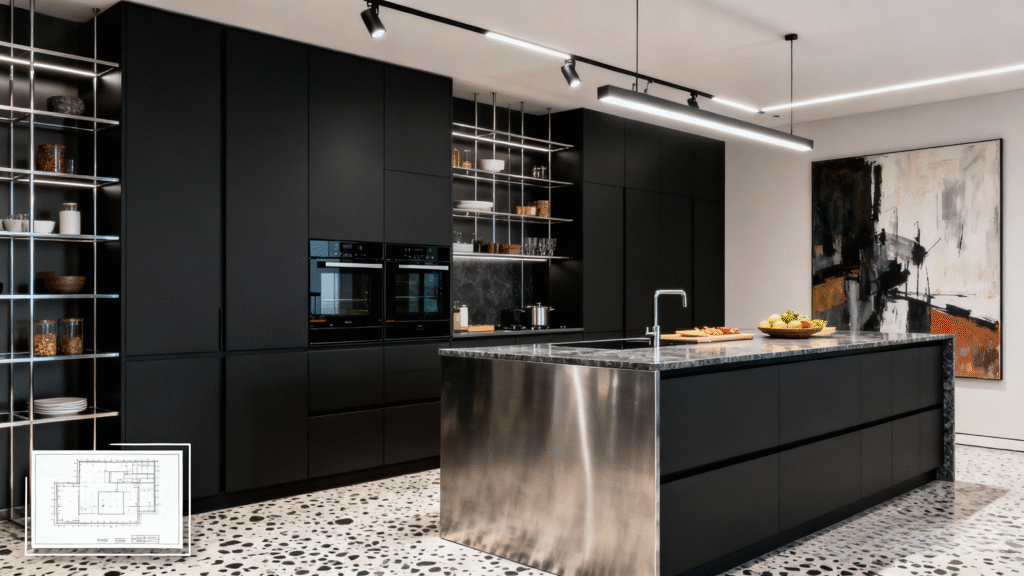
FAQs
What is the cheapest cabinet material in 2025?
Particle board is usually the cheapest option, ideal for low-budget projects, but it has the shortest lifespan and poorest moisture resistance.
Do MDF cabinets warp in humid climates?
Yes, MDF can swell and warp if exposed to moisture without sealing. Proper edge banding and ventilation reduce the risk.
Can plywood cabinets be painted?
Yes, plywood accepts paint and veneer well. It provides a strong base for both modern and traditional finishes.
Are MDF cabinets heavier than particle board?
Yes, MDF is denser and heavier. This makes it stronger but harder to install compared to lightweight particle board.
Do solid wood cabinets increase home value?
Yes, solid wood adds resale value. Buyers often see it as premium due to its durability, natural grain, and ability to refinish.
Which cabinet material is easiest to repair?
MDF can be repaired with filler and paint. Particle board is difficult to repair once damaged, while solid wood can be sanded and refinished.
Are there eco-friendly cabinet materials?
Yes, many plywood and MDF products now use low-VOC adhesives. These reduce harmful emissions and are safer for indoor air quality.
Can particle board support stone countertops?
Not recommended. Particle board cabinets may sag under heavy stone. Plywood or reinforced MDF are better structural choices.
